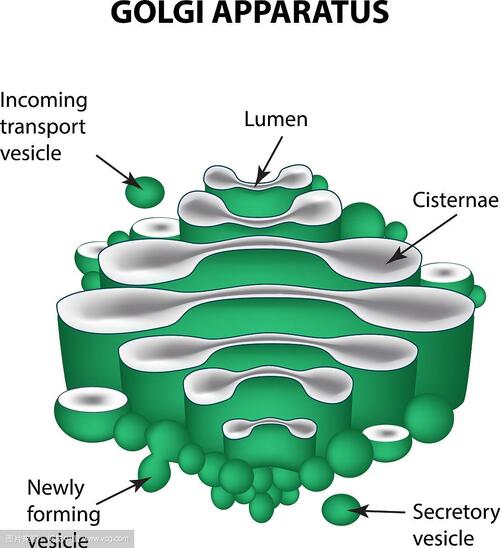The Golgi apparatus is a very important organelle in cells. It exists in animal and plant cells and is an important place for cells to secrete, transport, store and modify. This article will discuss in detail the role and structure of the Golgi apparatus in plant and animal cells, as well as its importance to cell life activities, to help you gain a deeper understanding of this organelle.

The Golgi apparatus was first discovered and named by Italian scientist Camillo Golgi in the late 19th century. It appears as a flat, stacked membrane vesicle under a microscope. The main function of the Golgi apparatus is to process and transport proteins and lipids, and to package and send cell secretions to different parts of the cell.
The Golgi apparatus is widely present in eukaryotic cells, including animal and plant cells. Its functions in different cell types vary slightly, but they are all an indispensable part of the growth and development of organisms.
The Golgi apparatus also plays an important role in plant cells. The Golgi apparatus of plant cells is often called the "unique Golgi apparatus" or the "plant Golgi apparatus". Its main functions in plant cells include:
The Golgi apparatus of plant cells is involved in the synthesis of cell walls. The Golgi apparatus is responsible for synthesizing and modifying the main components of the cell wall (such as cellulose, hemicellulose and pectin), and then transporting these components into the cell wall, allowing plant cells to grow and divide.
The Golgi apparatus of plant cells modifies newly synthesized proteins and lipids and transports them to other areas of the cell or secretes them outside the cell. It can make these proteins more stable or easier to identify by adding glycosylation modifications to proteins.
The Golgi apparatus of plant cells can package some special secretions and release them outside the cell through the cell membrane. These secretions can participate in the plant's defense mechanism, such as secreting antimicrobial substances to fight pathogens.
In animal cells, the structure and function of the Golgi apparatus have some similarities with those of plant cells, but they also have their own unique features.
In animal cells, the Golgi apparatus is responsible for glycosylation modification of proteins. This modification process is completed after the protein is synthesized in the endoplasmic reticulum, allowing the protein to fold correctly and have biological activity.
The Golgi apparatus is also involved in the transport of lipids. It receives the synthesized lipids from the endoplasmic reticulum and, after further processing, sends them to the cell membrane or other organelles.
The Golgi apparatus is the central hub of the secretory pathway of animal cells. The hormones, enzymes, antibodies, etc. secreted by cells are processed and packaged by the Golgi apparatus. Afterwards, these substances are transported to the cell membrane and eventually released outside the cell through exocytosis.
Although Golgi apparatus exists in both animal and plant cells, their structure and function vary in different types of cells:
The Golgi apparatus of plant cells is usually composed of smaller, discrete stacks, called "independent Golgi apparatus", which are more dispersed.
The Golgi bodies in animal cells are generally arranged together to form a larger "Golgi body network".
The Golgi bodies of plant cells play a key role in the synthesis and secretion of cell wall components.
The Golgi bodies of animal cells are more focused on protein modification and secretion, especially in the endocrine and immune systems, where the Golgi bodies are extremely important for the secretion of hormones and antibodies.
Whether in plant or animal cells, the Golgi body is one of the core hubs of cell operation. It plays a key role in the processing, modification and transportation of cellular substances:
The Golgi body can precisely modify proteins and lipids so that they can play their due role in the biochemical reactions within the cell.
The transport function of the Golgi body ensures that the substances inside the cell can be smoothly transported to the destination and maintain the normal functioning of the cell.
In plant cells, the Golgi body ensures the strength and stability of the plant cell wall by generating and transporting cell wall components; in animal cells, it helps maintain the renewal and repair of the cell membrane.
The Golgi body exists not only in plant cells, but also in animal cells. Although its role in plant and animal cells is different, it plays an extremely important role in the processing, modification, transportation and secretion of substances. The existence of the Golgi body is crucial to the life activities of cells, ensuring the exchange of substances inside and outside the cells, the maintenance of cell functions and normal growth and development.
By understanding the role of the Golgi body in cells, we can better understand the operating mechanism of cells and the complex molecular activities in organisms.
animal tags: Golgi.apparatus
We created this article in conjunction with AI technology, then made sure it was fact-checked and edited by a Animals Top editor.